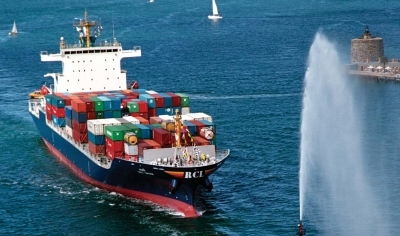Container feeders sweet spot, but challenges remain

According to the statistics, the sub-3,000 teu smaller feeder vessel segment is the only one that has been relatively insulated from the plunge in charter rates for container vessels.
Speaking at the Asian Logistics and Maritime Conference, Howe Robinson head of research Paul Dowell said charter rates for over 5,000 teu vessels have dropped 65% over the past six months while in the 8,000 teu segment, rates have fallen around 70% to 80%.
The smaller ship segment meanwhile has fallen by about 15% to 20%. This is however not necessarily a cause for celebration noted Tribini Capital director Thomas Soderberg.
He pointed out that while market demand is growing, with the Intra-Asia trades growing in excess of 10% still, the feeder market fleet is in a “pretty dire state” with poor maintenance and old ships as well as a lack of new orders.
A large part of the reason why this situation has come about is due to the demise of the German KG system as well as the massive withdrawal of funding by the traditional European shipping banks.
With the advent of the mega-box ships, there is a need for more feeder services to pump more volumes into the main transshipment ports. However the traditional liner companies are too cash-strapped to order both the big ships they need to compete on the long haul trades and the smaller feeder vessels, and are focusing on the former.
This presents an opportunity for smaller Asian players to enter the market, he said. This was corroborated by Howe Robinson research head Paul Dowell, who noted that the only people building smaller vessels are either Asian end users or companies with strong balance sheets such as Bernard Shulte and Oldendorff.
This however puts smaller independent ship owners such as Tribini’s Soderberg in a tough position as the big shipping banks have been steadily pulling back on capital lending, focusing now only on players with big balance sheets.
Noting that this has been a relatively recent phenomenon with the European banks going for balance sheet financing only in the past 12 to 18 months, Soderberg lamented that this means he has to now go with regional Asian banks with more expensive cost of funds.
HEADLINES
- Do shipping markets want Biden or Trump for the win?
- All 18 crew safe after fire on Japanese-owned tanker off Singapore
- Singapore launching $44m co-investment initiative for maritime tech start-ups
- Cosco debuts Global Shipping Industry Chain Cooperation Initiative
- US warns of more shipping sanctions
- China continues seaport consolidation as Dalian offer goes unconditional